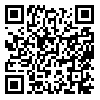Abstract
Objective: The present study aimed to conduct a diagnostic analysis of individuals with and without a tendency toward substance use based on attachment styles, adverse childhood experiences, and suicidal ideation. Method: This research employed a descriptive, causal-comparative design. The statistical population included all students at Semnan University during the academic year 2024–2025. Using a convenience sampling method, 205 individuals were selected as the study sample. Based on their scores on a substance use tendency scale, participants were classified into two groups: those with and those without a tendency toward substance use. The research instruments included the Attachment Styles Questionnaire, Adverse Childhood Experiences Questionnaire, Suicidal Ideation Scale, and Substance Use Tendency Scale. Data were analyzed using SPSS-23 statistical software. Findings: The findings revealed that attachment styles, adverse childhood experiences, and suicidal ideation significantly differentiated individuals with a tendency toward substance use from those without such a tendency. Among the examined variables, suicidal ideation and physical neglect emerged as the strongest predictors of substance use tendency and group classification.Conclusion: Individuals with a tendency toward substance use are more likely to exhibit insecure attachment styles, adverse childhood experiences, and suicidal ideation. Understanding these relationships may inform the development of more effective therapeutic interventions that address not only substance use but also attachment patterns, early traumatic experiences, and the management and reduction of suicidal ideation.
Received: 2024/12/25 | Accepted: 2025/04/26 | Published: 2025/09/1
| Rights and permissions | |
 |
This work is licensed under a Creative Commons Attribution-NonCommercial 4.0 International License. |





